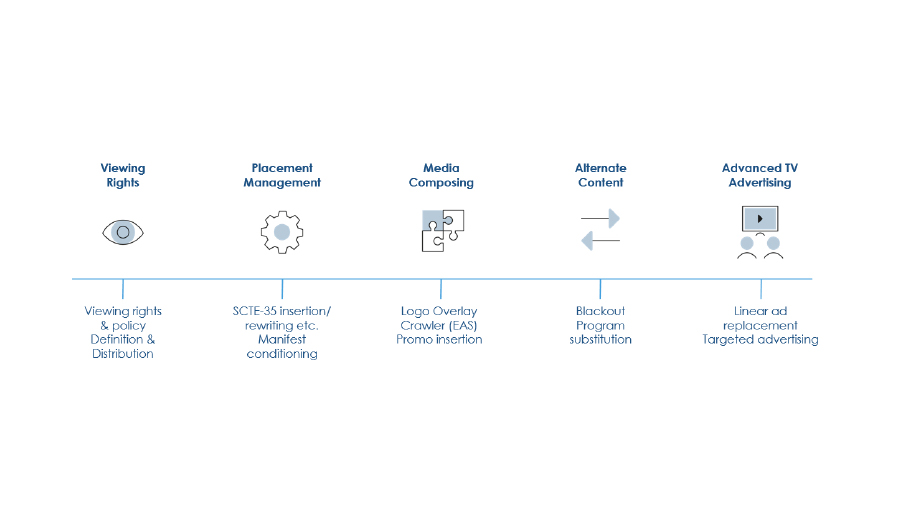Understand Your Audience with Addressable Advertising
With the growing number of DTC and TVE, advertisers are better able to reach their audience
While cord-cutters and cord-nevers are redefining what the modern TV experience will look like in the future, the immense appetite for new and engaging content remains a constant. Live TV continues to reign as the most popular form of consumer content, although various models of on-demand content are becoming increasingly popular methods to access TV shows and movies. The global health crisis and subsequent lockdown viewing culture has only further highlighted the popularity of these viewing mediums.

Conviva’s Streaming in the Time of Coronavirus report, published in early April 2020, found global streaming demand jumped by more than 20 per cent when compared with figures from March. Virtual, shared experiences are of greater significance now more than ever, and as a result, media companies are increasingly looking to offer highly personalized content to differentiate their services.
Long before the COVID-19 outbreak, the media industry had been shifting its attention towards monetization opportunities which are able to accommodate and embrace the growing demand for more personalized and relevant video experiences. With the cost of content acquisition rights soaring and the pervasiveness of content digitization, maximizing revenues from every potential viewer is now of critical importance to media businesses. To manage these increasing challenges – including the complexities that surround content distribution negotiations - media content companies need to find new innovative ways to deliver high-quality content to expectant viewers.
Luckily, the growing number of Direct-To-Consumer (DTC) and TV Everywhere (TVE) multiscreen services offered by broadcasters and operators are enabling advertisers to shift from traditional ‘one-to-many’ to ‘one-to-one’ session-based conversations with targeted audiences, in a high value premium TV environment.
This nuanced approach is made possible thanks to high-quality, first-party data gathered from long-standing relationships established with end-users.

Going beyond billboards: Target advertising
With the steep rise in popularity of OTT video services, programmers and multichannel video programming distributors (MVPDs) must find new methods of monetization through targeted advertising.
(Server-side) Dynamic ad insertion (DAI) helps broadcasters and service providers to effectively personalize and monetize multiscreen video services across linear, OTT, and streaming services. By analyzing consumer profiles while complying with privacy protection regulations, TV operators and service providers can gain a better understanding of consumer behavior, and the type of content that different audience segments regard as premium.
Through a more personalized advertising offering, broadcasters and service providers can retain much better control of the content they are delivering to viewers, based on geography, socio, demo and behavioral data, as well as enabling new monetization opportunities for existing inventory and content assets.
To fully utilize this, media operators and content owners need vendors that can help them recognize the full revenue potential of advertising. Advertising solutions are now in place to empower advertisers to obtain a greater level of control and insight, enabling them to provide a more streamlined and cost-efficient means to reach audiences. This is particularly pertinent given the significant budget restrictions caused by the current situation around COVID-19 and its subsequent disruptive impact on the wider media landscape.
Leveraging industry standards
In response to the increasing market complexity triggered by the surge of new OTT-based services, MVPDs must continue to offer natural value-adds to advertisers. For this, global standards will be critical for the successful management of programmatic advertising workflows. In addition, given the complexity behind handling distribution rights agreements, it will be vital that the industry adopts and supports key video standards such as the SCTE-224 standard, now regarded as the most advanced and standardized data model dedicated to distribution rights.
SCTE-224 is being rapidly adopted by both broadcasters (as a way to define rights) and by operators (as a way to enforce them), particularly in the US. Moving forward, the combination of SCTE-35 to handle in-band signaling and SCTE-224 for processing out-of-band rules (such as blackout and program substitution) will be fundamental to enabling easy deployments and implementations.
It is very difficult to predict how consumers will gravitate towards different types of content consumption models. And with the global health crisis temporarily impacting traditional TV heavy hitters, such as sports and soap operas, operators need to be ready to react to the shifting needs of consumers and advertisers as quickly as possible.
Operators today have a unique advantage as they are able to understand their audiences’ preferences and viewing patterns in greater depth than ever before. Having the core technology in place is a prerequisite, but almost as important is the ability to adapt in line with the market. Yet at a time when the current global health crisis is changing the dynamics of an already shifting media landscape, operators and broadcasters must continue to react to the needs of consumers and advertisers, and the challenges of a digital world.
Multichannel Newsletter
The smarter way to stay on top of the multichannel video marketplace. Sign up below.
